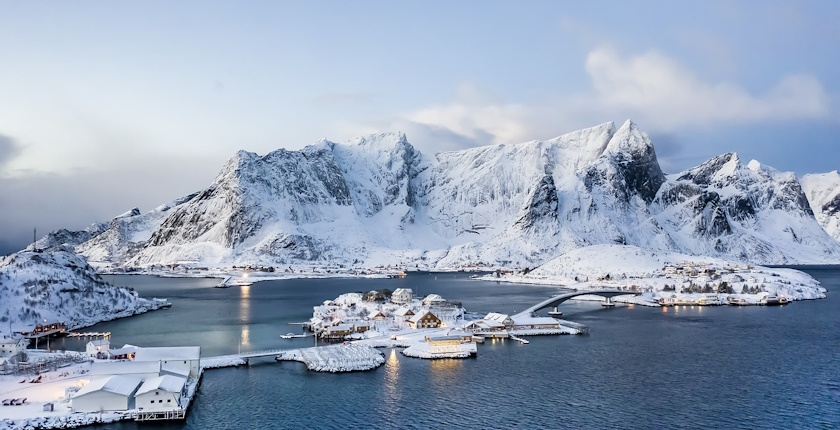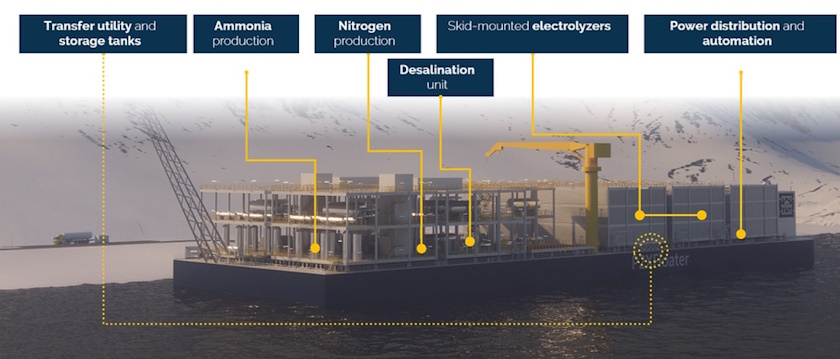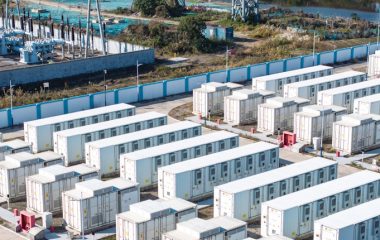
Photo: Cristian Manieri from Pixabay
Norwegian company H2Carrier has applied for licenses to construct two large onshore wind farms as part of an integrated power-to-X project to produce hydrogen and ammonia.
The power-to-X project in the northernmost and easternmost county in Norway, inside the Arctic Circle, is set to use P2XFloater. It is the world’s first floating production unit for producing green ammonia at an industrial scale, according to H2Carrier.
The company said it submitted an application to the Norwegian Water Resources and Energy Directorate (NVE) for two large onshore wind farms in Finnmark county.
In line with a government initiative for raising energy and industry production in the area, NVE has asked companies to notify their plans for developing wind power, H2Carrier noted.
The two wind farms are planned with a total capacity of 1.55 GW
The site for the Oksefjorden wind farm is at the Skjøtningberg/Nordkyn peninsula in the municipalities of Lebesby and Gamvik while the Rubbedalshøgda facility would be in the Varanger peninsula in the municipalities of Båtsfjord and Berlevåg.
The two wind farms are planned at a combined 1.55 GW and an estimated annual production of 6,356 GWh. Annual production volume of green hydrogen and ammonia is estimated at 109,000 and 610,000 tons, respectively, H2Carrier said.
The company added it would use the renewable power produced onshore for its floating production facilities installed on a ship moored near the shore. The firm expressed confidence that the solution avoids the large irreversible environmental footprint normally associated with conventional onshore production of hydrogen/ammonia.

According to H2Carrier’s website, P2XFloater doesn’t require leasing or purchasing of land, storage tanks, pier construction or constructional and operational concessions. It is flexible in its positioning, as it can be situated where renewable energy has the lowest cost, the company pointed out.
It allows the facility to utilize the lowest renewable power prices in the world, thus producing extremely cost-competitive green ammonia, the firm said.
Green hydrogen will be produced from seawater, which will be purified and fed into electrolyzer, the documentation shows. The green hydrogen is envisaged to be combined with nitrogen extracted from the air and synthesized in an ammonia generator to produce green ammonia.
Lunde: By establishing new green industries on a floating production vessel adjacent to the wind farm, we are no longer dependent on an expansion of the national grid
As the next step, NVE will identify a plan that includes hearings and impact assessments before deciding on a concession to build the wind farms. Mårten Lunde, CEO of H2Carrier AS, said the company is pleased to present plans that allows it to leverage technologies and processes developed from Norway’s offshore oil and gas activities.
“The limited grid capacity in Finnmark represents a bottleneck for development of new renewable power. By establishing new green industries on a floating production vessel adjacent to the wind farm, we are no longer dependent on an expansion of the national grid,” Lunde stressed.



















Be the first one to comment on this article.